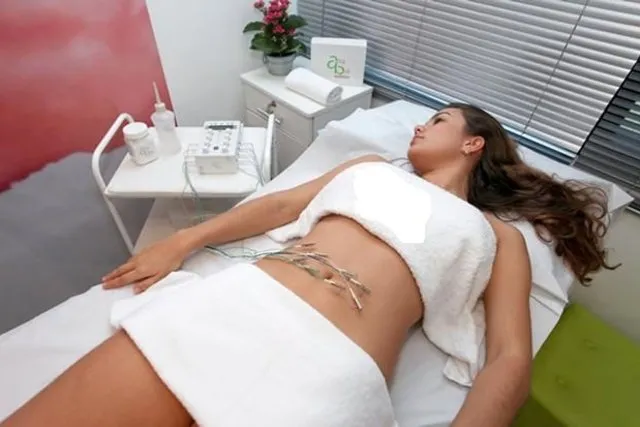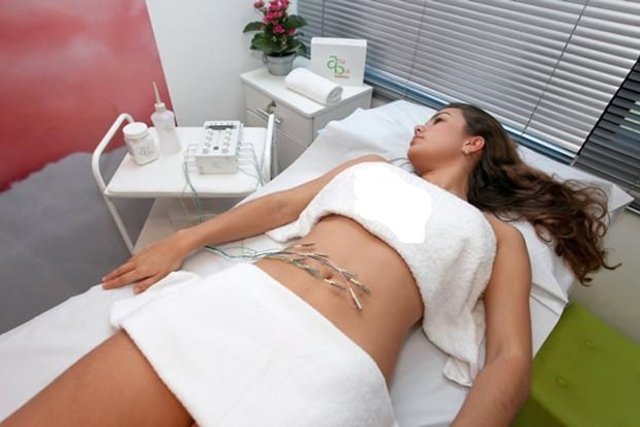Electrolipolysis, or electrolipophoresis, is an aesthetic treatment that works to combat localized fats and cellulite. However, this is a procedure is not recommended for those who have skin sores, local infections, diabetes and fibroids, for example.
Treatment with electrolipolysis promotes the breakdown of fat cells and facilitates their exit. Scientific studies have proven that the use of electrolypolysis is effective in combating fat locates and cellulite, however, better results are observed if the person also performs physical exercises and have a hypocaloric diet.

How it works
Electrolipolysis aims to eliminate the accumulated fat by stimulating the lipolysis process, that is, fat breakdown, through the application of low frequency electric current at the site, with consequent loss of accumulated fat and increased blood circulation, also improving the appearance of the skin and reduction of swelling.
To pass the electric current, a device connected to the acupuncture needles, which are placed in the region to be treated, such as the abdominal area, flanks, butt or thighs, for example.
The needles are placed in pairs, with a distance of less than 5 cm, and attached to the apparatus. The physiotherapist must turn on the device, placing the necessary parameters for the procedure, and the individual will feel the electric current in the region (a kind of tingling) until he almost feels pain.
The needle technique is more effective because it acts directly on fat cells, however electrolipolysis can also be done using silicone electrodes that are placed in the place to be treated and that transmit the electrical current to the fat cell.
Usually 10 sessions are indicated so that you can notice the results, but the number of sessions may vary according to the method used and the amount of fat you want to be eliminated.
Results of electrolypolysis
The results of electrolypolysis are usually observed from the 10th session, but can be seen beforehand if the person chooses to perform other aesthetic treatments such as lymphatic drainage, which facilitates the removal of fluids and toxins.
It is recommended to perform at least 10 sessions of electrolipolysis at least once a week, in the case of treatment with needles, and up to 2 times in the case of silicone electrode, in addition to practicing physical activities and having an adequate and balanced diet, thus reducing the accumulation of fat and the appearance of cellulite. Here’s what to eat to eliminate fat.
Where to do
The technique can be performed in aesthetic clinics or physiotherapy clinics, by properly trained physiotherapists. Sessions should be performed about 2 times a week, on alternate days, and better results are observed if after electrolyte the person performs a manual or mechanical lymphatic drainage session.
An electrolypolysis session lasts on average for 40 minutes and there is usually no pain, however the person may feel a slight tingling, but which does not generate pain.
During the session, it is normal that it seems that the intensity of the device has decreased, and at this moment, the physiotherapist should increase the graduation of the device, because the individual is already able to withstand a greater intensity.
Contraindications of electrolipolysis
Although it is an effective method of aesthetic treatment, it has several contraindications, not being indicated for people who have allergies in the area to be treated, are pregnant, have hypothyroidism, Cushing syndrome, calcium deficiency or osteoporosis, for example.
In addition, people who have cardiac pacemaker, epilepsy, renal failure, myome, cancer, hypertension, hypoglycemia, diabetes or use medications with corticosteroids, progesterone or beta-blockers, should not make this aesthetic treatment for elimination of localized fat. Check out other treatment options for localized fat.
Here are other tips that can help you end cellulite in the following video:

Sign up for our newsletter and stay up to date with exclusive news
that can transform your routine!
Warning: Undefined array key "title" in /home/storelat/public_html/wp-content/plugins/link-whisper-premium/templates/frontend/related-posts.php on line 12
Warning: Undefined array key "title_tag" in /home/storelat/public_html/wp-content/plugins/link-whisper-premium/templates/frontend/related-posts.php on line 13




